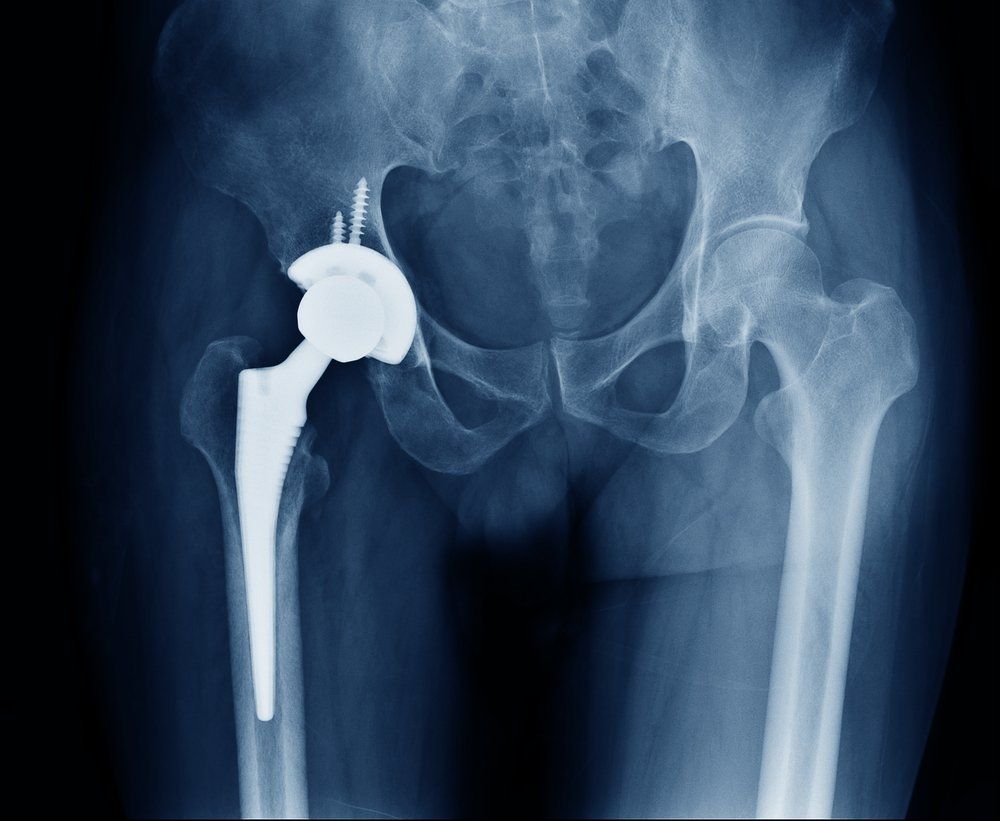Article
Total Hip Arthroplasty No Better Than Partial Joint Replacement
Author(s):
Total hip arthroplasty does not provide a clinically significant improvement over hemiarthroplasty in function and quality of life over 24 months, shows a NEJM study. The incidence of secondary procedures did not differ significantly between the two groups.
NEJM study shows total hip replacement is no better than partial replacement. (©ChooChinShutterstock.com)

Total hip arthroplasty and hemiarthroplasty in displaced femoral neck fractures showed similarities in the incidence of secondary hip procedures, and total hip arthroplasty provided a clinically unimportant improvement over hemiarthroplasty in function and quality of life over 24 months, say researchers writing in the New England Journal of Medicine last month.
Patients with a hip fracture are at considerable risk for death, health complications, and reduced quality of life. Despite the high frequency of displaced femoral neck fractures, the way this injury in elderly patients should be surgically managed remains uncertain. While total hip arthroplasty may show benefits regarding patient function and quality of life, along with fewer reoperations, as compared with hemiarthroplasty, total hip arthroplasty may have greater associated surgical morbidity and increase the risk of dislocation.
This randomized, controlled multicenter trial involved 1,595 independently ambulating patients, aged over 50 years, with a displaced femoral neck hip fracture. Researchers examined the effect that total hip arthroplasty, as compared with hemiarthroplasty, had on the risk of a secondary hip procedure within 24 months of follow-up. Death, serious adverse events, hip-related complications, health-related quality of life, function, and overall health end points were included as secondary end points.
The need for a secondary hip procedure within 24 months of follow-up was the same with total hip arthroplasty (7.9 percent) and hemiarthroplasty (8.3 percent; hazard ratio, 0.95; 95% confidence interval [CI], 0.64 to 1.40; P=0.79). Hip instability or dislocation occurred in 4.7% and 2.4% of patients, respectively (hazard ratio, 2.00; 99% CI, 0.97 to 4.09). Function, which was measured by the WOMAC total score, pain score, stiffness score, and function score, modestly favored total hip arthroplasty over hemiarthroplasty.
Mortality over 24 months was similar for total hip arthroplasty and hemiarthroplasty (14.3 percent versus 13.1 percent) and serious adverse events occurred in 41.8 percent and 36.7 percent of patients, respectively.
“The incidence of serious adverse events was slightly higher in the total hip arthroplasty group than in the hemiarthroplasty group,” wrote the authors, led by Mohit Bhandari, M.D., Ph.D., of McMaster University in Hamilton in Ontario. “Serious adverse events were not driven by a specific type of complication; rather, total hip arthroplasty broadly led to more cardiac, renal, vascular, neurologic, and respiratory events than hemiarthroplasty.”
The American Academy of Orthopedic Surgeons and National Institute for Health and Care Excellence recommend total hip arthroplasty in all patients with displaced femoral neck fractures who can ambulate independently.
“Our findings suggest that the advantages of total hip arthroplasty may not be compelling. The limited advantages of total hip arthroplasty, as well as the possible higher risk of complications, may be particularly important in regions of the world where total hip arthroplasty is not easily accessible or is cost-prohibitive,” the authors wrote.
However, they noted that “the follow-up period in our trial may have been insufficient for understanding longer-term end points.”
REFERENCE
Mohit Bhandari, Thomas A. Einhorn, Gordon Guyatt, et al. “Total Hip Arthroplasty or Hemiarthroplasty for Hihttps://www.nejm.org/doi/full/10.1056/NEJMoa1906190p Fracture.” N Engl J Med. September 26, 2019. DOI: 10.1056/NEJMoa1906190




